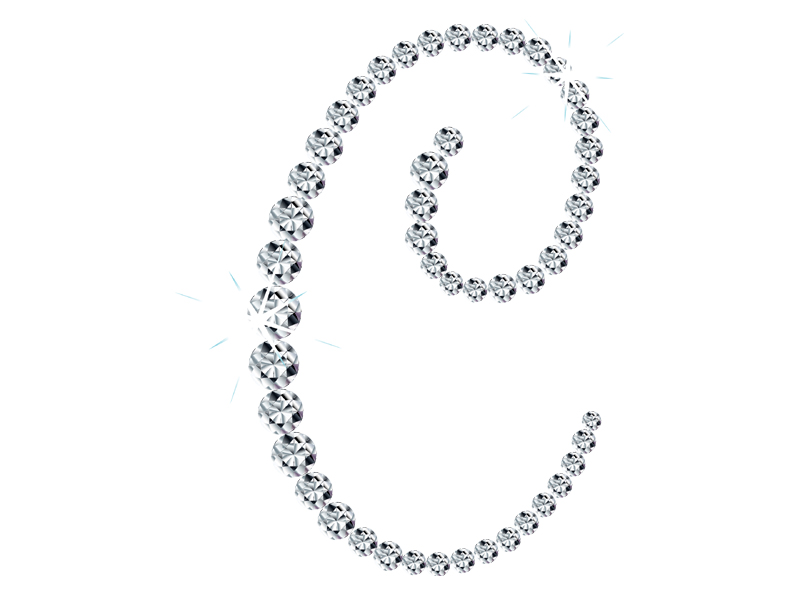
Be it for jewellery or investment purposes, a good quality one carat diamond can cost anywhere between $5,000 to $10,000, ie roughly Rs500,000 to Rs100,000. And since fewer women comprehend what determines the price, here is a basic understanding of the stone and its structure to help you find a rock that suits your budget and is your money’s worth.
Most women are too preoccupied with the size of a diamond to consider the other aspects of purchasing the stone. In effect, diamonds are amongst the most sought-after natural substances in the world. Found in a handful of countries, namely India, Australia, Canada and Angola, with the largest volume coming from Russia and the finest from Botswana, diamonds are a derivate of carbon. These sparkling gems are formed due to intense pressure accumulating beneath the surface of the Earth which crystallises the carbon, thereby turning it into the diamond as we know it.
Similarly, its retail also has a bit of science to it. There are four basic factors you must consider to determine the quality of the stone: colour, clarity, cut and carat. The four Cs come together to determine its price, each having a significant effect.
THE FOUR
Colour:
The colour of a diamond is set by a grading system developed by the Gemmological Institute of America, ie the GIA System, with the highest grade, the letter D, awarded to a colourless white diamond. According to the system, there are 23 shades of diamonds with a letter grade denoting each of them. They range from entirely colourless to faint, light and light in gradual transition, all the way to a Z. Although most of the colour differences may be invisible to the untrained eye, most people can spot the transition within the I to J range. The colour becomes more obvious as the carat size increases and can occur in blue and red, the rarest in the world.
Cut:
The cut of a diamond is a pre-requisite when gauging its quality as it affects the overall symmetry and proportioning of the gem. There are a number of popular cuts today, including the round, princess, trillion, oval, marquise, baguette, heart and pear. There is more to the cut however, than just shape; a diamond’s cut grade refers to how well it reflects light. Cutting the world’s hardest-known substance to exact proportions and polish to deliver the right return of light requires excellent workmanship, further raising the price of the rock.
Clarity:
Defects in a diamond, such as minerals or laser lines sustained from cutting are called ‘inclusions’. The GIA system also determines the clarity with another chart beginning from FL meaning flawless, which is inclusion-free diamond, up to I3, denoting obvious inclusions affecting the diamond’s shine and transparency. A very slightly included diamond, the VSI, may cost less and look just as pretty as a flawless one.
Carat:
Once you have settled upon how much you are willing to spend on the first three C’s, you can determine the carat size to fit your finances and quality benchmark. A single carat equals 200mg on the metric system. While women generally prefer dealing in whole numbers, diamond carats start at ‘magic sizes’ such as 0.25, 0.5 and 0.75 up to the hundredth decimal. As the carat size increases the price of the diamond rises exponentially. Purchasing a diamond just below a whole carat mark, say 0.8 for one carat, can save you thousands of rupees without any visible differences.
There are also a number of other measures one can take to pick the right diamond. For instance, the brightness test determines quality by examining the external and internal work of light from the diamond and the spectrum it creates — the better the reflection, the better the diamond. In addition to this, the authenticity of the gem can be determined by its thermal conductivity and hardness as real diamonds are almost fire and scratch proof. It takes about 700 degrees Celsius to burn a diamond. Unfortunately, true gem quality diamonds constitute only 25% of all the diamonds in the world.
Once purchased, all jewellery stores exchange a certificate of guarantee which states the weight, cut, clarity and price of the diamond. Much like any other industry, the diamond business is monopolised by a few leading companies which often tend to charge more than the rest. DeBeers, for instance, is the largest diamond company in the world, conducting diamond mining and trade across the world from its offices in South Africa, UK and Canada. From an investment point-of-view, one must note that the value of a diamond rarely falls as prominent diamond cartels strive to maintain its value globally. Hence, they do not always reap the highest financial rewards.
RULE
History matters:
A point to note is that in many parts of the world, particularly African nations like Sierra Leone, Angola and Congo, ‘conflict diamonds’ are illegally mined and sold to finance insurgencies and rebels. In order to strengthen the international diamond market and eradicate the exchange of ‘blood diamonds,’ the Kimberly Process Certification Scheme (KPCS) was developed in early 2002 which brought large volumes of diamonds to the legal market. Many international jewellers like Tiffany and Co only trade with countries that fulfil KPCS’s requirements. However, most local diamond dealers across the world will claim to have acquired their diamonds legally. So if the history of your diamond is important to you, ask your jeweller for proof of his source and invest only when you are thoroughly satisfied.
Published in The Express Tribune, Ms T, April 20th, 2014.


1725443747-0/Untitled-design-(5)1725443747-0-165x106.webp)














COMMENTS
Comments are moderated and generally will be posted if they are on-topic and not abusive.
For more information, please see our Comments FAQ